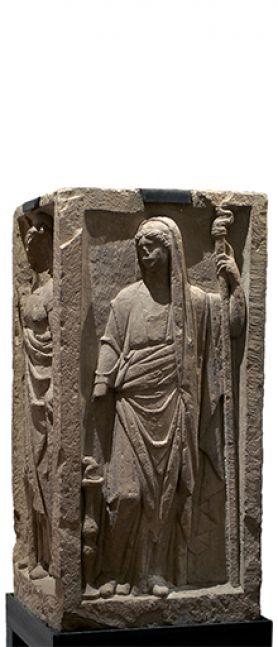Stela comprising four deities

Gallo-Roman stelae, rectangular stone slabs standing at crossroads and surmounted by a group depicting Jupiter on horseback crushing a monster whose body ended in a snake's tail, came in various types depending on the deities with which they were associated. This one, combining four deities, is well represented in the Rhineland regions. Excavated in 1954 by Professor Jean-Jacques Hatt at Place Kléber in Strasbourg, it has been dated to the beginning of the 3rd century. Four deities can be seen: Minerva, Hercules, Mercury and Juno. In the delicacy and beauty of the carving, it is without a doubt one of the most accomplished of its kind. The acanthus leaf capital with four female heads, displayed nearby, was undoubtedly used to surmount the stela.
Minerva is shown helmeted, her torso protected by a breastplate. She holds her shield and spear. The left-hand face of the stela shows Hercules but his lower limbs have been damaged. He leans with his left hand on a heavy club and has a quiver slung over his shoulder. Mercury has his characteristic attributes: a wide-brimmed hat and a pair of wings called a petasus, a caduceus and a purse. Juno, goddess of the hearth, carries a long-handled lighted torch. Her clothing is in the classical Roman style: a wide tunic with long sleeves, held at the waist by a belt and falling to her feet. She is also dressed in a coat, one side of which serves as a veil, harmoniously undulating as it falls to her feet.
